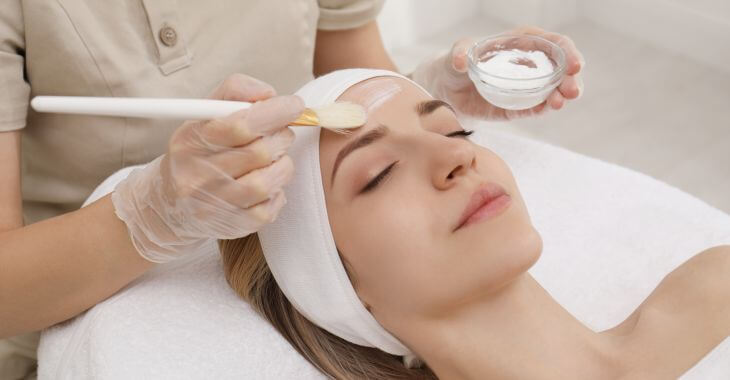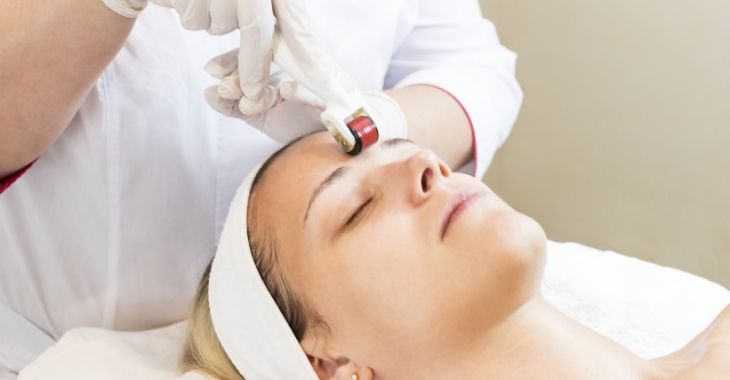Chemical Peel Process Day by Day

A chemical peel is a cosmetic procedure that involves the application of a chemical solution to the skin to exfoliate and improve its texture, tone, and appearance. The process typically occurs over several days; here is the chemical peel process day by day to provide an understanding of what to expect.
Day 1: Consultation and Preparation
The chemical peel process begins with a consultation with a licensed dermatologist or skincare professional. During this initial meeting, you will discuss your skincare concerns, goals, and medical history. The professional will evaluate your skin type, condition, and suitability for a chemical peel.
Once the treatment plan is established, you will receive pre-peel instructions. These may include discontinuing the use of specific skincare products like retinoids and avoiding sun exposure in the days leading up to the peel. Proper preparation is crucial for ensuring the safety of the procedure.
Day 2: The Chemical Peel Procedure
On the day of the chemical peel, you will visit the skin care professional’s office or clinic. The process typically follows these steps:
- Cleansing: Your face will be thoroughly cleaned to remove any makeup, oils, and impurities. This ensures that the chemical solution can penetrate the skin effectively.
- Application of the Chemical Solution: The chemical peel solution is applied to your skin using a brush or a cotton pad. The solution is selected based on the type and intensity of the peel, as well as your skin’s specific needs, and may include glycolic acid, salicylic acid, lactic acid or trichloroacetic acid (TCA).
- Duration of Application: The solution is left on the skin for a predetermined amount of time, depending on the type of peel. Superficial peels may only remain on the skin for a few minutes, while deeper peels may stay on for 20-30 minutes or longer.
- Neutralization: The chemical solution is neutralized or removed with water, and a soothing, neutralizing solution is often applied to the skin.
- Temporary Discomfort: You may experience a stinging or burning sensation during the application of the chemical solution, which should subside after neutralization. If you undergo a deep peel, you might receive anesthesia or sedation to minimize discomfort.
- Redness and Peeling: After the treatment, you may notice redness and some initial peeling, which will intensify in the days following the procedure in various chemical peel stages.
Day 3-4: Chemical Peel Recovery Time
The chemical peel recovery time begins in the days after the procedure. The initial days after a chemical peel are crucial for proper recovery and skincare. In the day-by-day chemical peel recovery, you may experience the following:
- Redness and Swelling: You may experience redness, swelling, and some discomfort, similar to a sunburn. This is particularly common with medium to deep peels.
- Skincare Products: Your skincare professional will provide post-peel instructions, which may include applying specialized ointments or creams to aid in the healing process. It’s essential to follow these recommendations diligently.
- Avoid Sun Exposure: Protect your skin from direct sun exposure. Sunscreen is crucial during this period to prevent further damage and hyperpigmentation.
- Peeling and Flaking: Your skin will start to peel and flake as the outer layers shed. This process may last several days and can be more pronounced with deeper peels.
Day 5-7: Skin Peeling Continues
Over the following week, your skin will continue to peel and flake. The extent of peeling depends on the type and intensity of the chemical peel. Deeper peels may result in more dramatic shedding and have more intense chemical peel stages.
Day 8-14: Post-Peel Recovery and Healing
As your skin continues to heal, you will notice improvements in its texture and appearance. During this phase:
- New Skin Emerges: The peeled and damaged skin is gradually replaced with newer, healthier skin, revealing a brighter, more youthful complexion.
- Follow-Up Appointment: Some individuals may have a follow-up appointment with their skincare professional to assess the results and discuss any further skincare recommendations.
- Sun Protection: Sunscreen and sun protection remain essential to prevent sun damage and maintain the results of the chemical peel.
Day 15 and Beyond: Enjoying the Results
After two weeks, you should see the full benefits of the chemical peel. Your skin should look rejuvenated, with improved texture, reduced pigmentation issues, and a more youthful glow. To maintain the results and prevent future skin issues, continue to follow a proper skincare routine.

It is worth noting that the number of days and the intensity of recovery can vary based on the specific type of chemical peel and the individual’s skin characteristics. Some people may experience very minimal downtime with superficial peels, while others may require several weeks to recover.
The chemical peel stages and recovery process involves several or more days each with its own specific characteristics and requirements. By understanding the chemical peel process day by day, individuals can better prepare for and manage the recovery associated with this popular cosmetic procedure.
The information provided on this website, including text, graphics, images, and other materials, is intended solely for informational purposes and should not be used as a substitute for professional medical advice, diagnosis, or treatment.



)